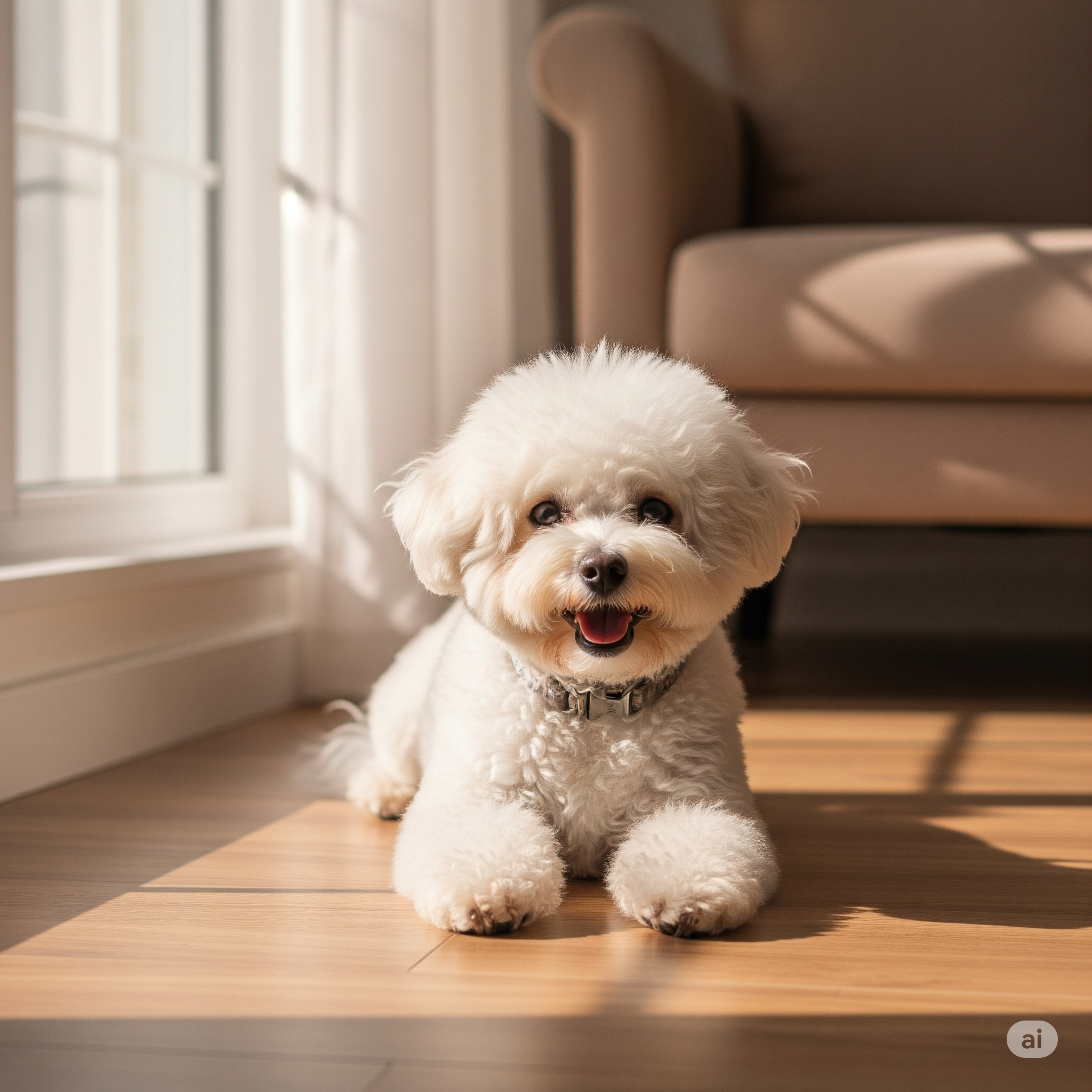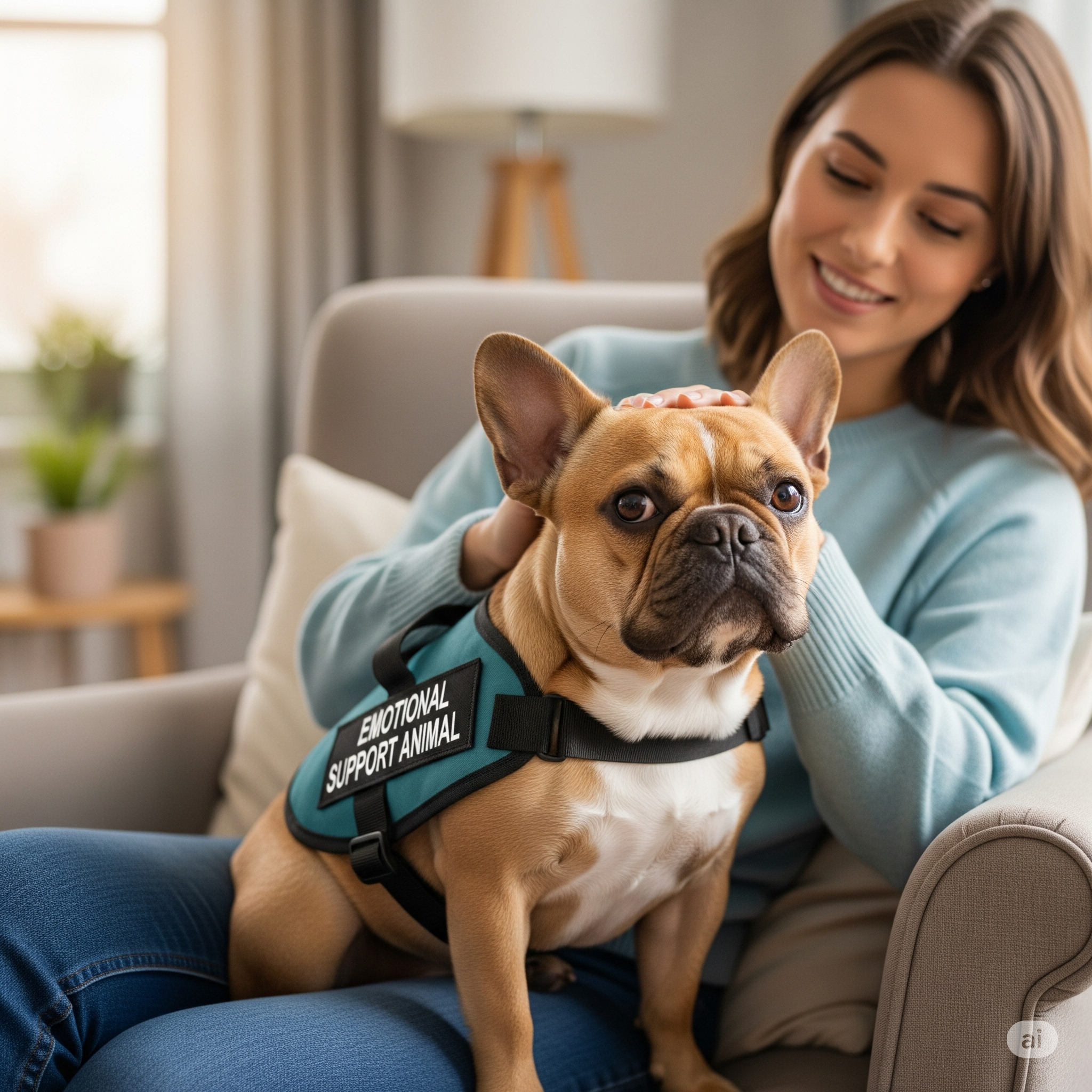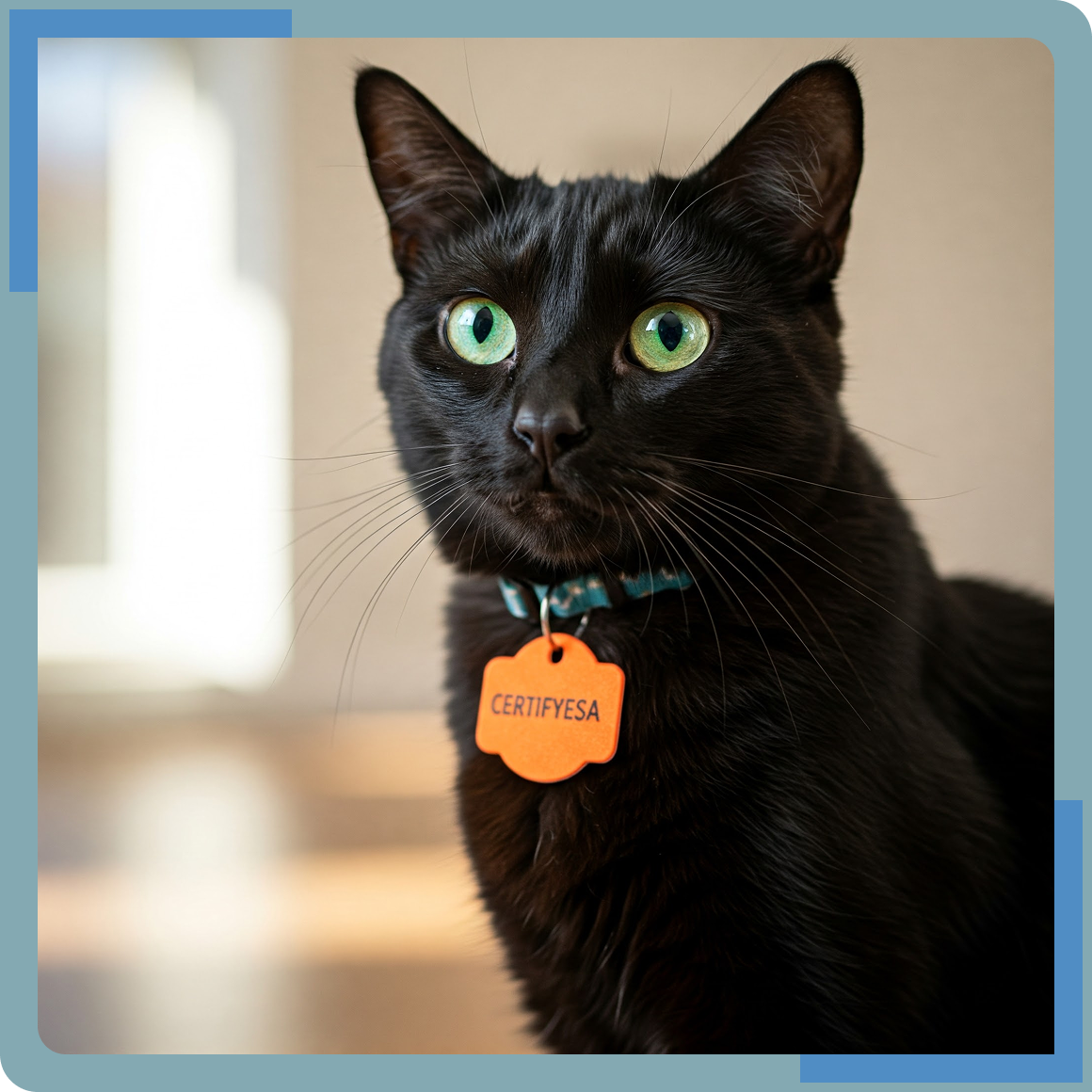Tips for Keeping Your ESA Comfortable During Oregon’s Rainy Winters
Oregon’s winters are synonymous with rain. While the lush greenery and mild temperatures are appealing, the constant dampness can pose unique challenges for keeping your Emotional Support Animal (ESA) comfortable, healthy, and happy. Ensuring their well-being during these months is crucial for both their comfort and your emotional support.
Here are essential tips for keeping your ESA comfortable during Oregon’s rainy winters:
1. Protect Them from the Wet
The most obvious challenge is the rain itself. Constant dampness can lead to chilling, skin irritations, and even more serious health issues.
-
Invest in Quality Rain Gear: For dogs, a waterproof coat or rainjacket is a must. Look for options that offer good belly coverage to prevent mud and dampness from splashing up. Short-haired breeds, seniors, and small dogs will benefit the most from the added warmth and dryness.
-
Paw Protection: Wet paws are prone to irritation, cracking, and even fungal/yeast infections between the pads.
- Dog Booties: Consider dog booties for walks to create a barrier against cold, wet surfaces, and any potential road salts or chemicals. Ensure they fit properly to avoid chafing.
- Paw Wax/Balm: Apply a pet-safe paw wax or balm before walks to create a protective layer and moisturize pads, preventing dryness and cracking.
- Trim Paw Fur: Keep the fur between your dog’s paw pads trimmed to prevent moisture and debris from getting trapped, which can lead to irritation and infections.
-
Thorough Drying: This is paramount! After every outdoor excursion, thoroughly dry your ESA’s fur, paws, and underbelly with a towel. Pay special attention to ears (especially floppy-eared breeds) and skin folds, as these are areas where moisture can get trapped and lead to infections. A pet-safe blow dryer on a cool setting can be helpful for thick-coated animals.
2. Maintain Indoor Comfort and Hygiene
Your home becomes your ESA’s primary haven during winter.
-
Cozy, Dry Sleeping Areas: Provide warm, elevated beds that keep them off cold, damp floors. Ensure bedding stays dry and clean. Wash blankets and beds regularly to prevent mildew or musty odors that can aggravate allergies or skin sensitivities.
-
Regular Grooming: While frequent baths might not be ideal in cold weather, regular brushing helps distribute natural oils and keeps their coat healthy. If baths are needed, use lukewarm water and ensure your ESA is completely dry afterward.
-
Monitor Skin and Ears: Check your ESA’s skin and ears frequently for any signs of redness, itching, flakiness, or unpleasant odors, which could indicate a yeast or bacterial infection due to dampness. Consult your vet if you notice any issues.
3. Ensure Mental and Physical Stimulation
Limited outdoor time due to rain can lead to boredom, restlessness, and anxiety in ESAs, which can counteract their therapeutic benefits.
-
Indoor Play and Exercise:
- Dogs: Engage in active indoor games like fetch in a hallway, hide-and-seek, or setting up a mini-obstacle course. Puzzle toys and treat-dispensing toys can keep them mentally stimulated. Consider short indoor training sessions to teach new tricks or reinforce commands.
- Cats: Provide vertical space like cat trees or shelves. Use wand toys, laser pointers (responsibly), and puzzle feeders. Create cat mazes with cardboard boxes or set up a window perch for “cat TV” (bird watching).
-
Maintain a Routine: Consistent feeding times, playtimes, and potty breaks help maintain a sense of normalcy and reduce anxiety, even if outdoor activities are shorter.
-
Mental Enrichment: Rotate toys to keep them novel and exciting. Consider scent games or “nose work” where your dog has to find hidden treats.
4. Prioritize Safety and Health
Oregon’s winter weather can bring hazards beyond just rain.
-
Watch for Slippery Surfaces: Wet sidewalks and trails can be slippery. Walk at a slower pace, especially with older ESAs or those with joint issues.
-
Avoid Contaminated Water: Puddles and standing water can contain bacteria like leptospirosis or antifreeze. Prevent your ESA from drinking from puddles and ensure they are up to date on vaccinations.
-
Visibility: During dark, rainy days, use reflective collars, leashes, or LED lights to ensure you and your ESA are visible to cars and cyclists.
-
Vet Check-ups: Cold, damp weather can exacerbate conditions like arthritis. Ensure your ESA has regular veterinary check-ups, and discuss any concerns about joint pain or mobility during winter.
By being proactive and attentive to their needs, you can ensure your Emotional Support Animal remains comfortable, healthy, and a source of joy and support throughout Oregon’s rainy winters.
Tips for Keeping Your ESA Comfortable During Oregon’s Rainy Winters
Oregon’s winters are synonymous with rain. While the lush greenery and mild temperatures are appealing, the constant dampness can pose unique challenges for keeping your Emotional Support Animal (ESA) comfortable, healthy, and happy. Ensuring their well-being during these months is crucial for both their comfort and your emotional support.
Here are essential tips for keeping your ESA comfortable during Oregon’s rainy winters:
1. Protect Them from the Wet
The most obvious challenge is the rain itself. Constant dampness can lead to chilling, skin irritations, and even more serious health issues.
-
Invest in Quality Rain Gear: For dogs, a waterproof coat or rainjacket is a must. Look for options that offer good belly coverage to prevent mud and dampness from splashing up. Short-haired breeds, seniors, and small dogs will benefit the most from the added warmth and dryness.
-
Paw Protection: Wet paws are prone to irritation, cracking, and even fungal/yeast infections between the pads.
- Dog Booties: Consider dog booties for walks to create a barrier against cold, wet surfaces, and any potential road salts or chemicals. Ensure they fit properly to avoid chafing.
- Paw Wax/Balm: Apply a pet-safe paw wax or balm before walks to create a protective layer and moisturize pads, preventing dryness and cracking.
- Trim Paw Fur: Keep the fur between your dog’s paw pads trimmed to prevent moisture and debris from getting trapped, which can lead to irritation and infections.
-
Thorough Drying: This is paramount! After every outdoor excursion, thoroughly dry your ESA’s fur, paws, and underbelly with a towel. Pay special attention to ears (especially floppy-eared breeds) and skin folds, as these are areas where moisture can get trapped and lead to infections. A pet-safe blow dryer on a cool setting can be helpful for thick-coated animals, but always keep the dryer at a safe distance (at least 6 inches) to avoid skin burns and avoid sensitive areas like eyes and ears.
2. Maintain Indoor Comfort and Hygiene
Your home becomes your ESA’s primary haven during winter.
-
Cozy, Dry Sleeping Areas: Provide warm, elevated beds that keep them off cold, damp floors. Ensure bedding stays dry and clean. Wash blankets and beds regularly to prevent mildew or musty odors that can aggravate allergies or skin sensitivities.
-
Regular Grooming: While frequent baths might not be ideal in cold weather, regular brushing helps distribute natural oils and keeps their coat healthy. If baths are needed, use lukewarm water and ensure your ESA is completely dry afterward.
-
Monitor Skin and Ears: Check your ESA’s skin and ears frequently for any signs of redness, itching, flakiness, or unpleasant odors, which could indicate a yeast or bacterial infection due to dampness. Consult your vet if you notice any issues.
3. Ensure Mental and Physical Stimulation
Limited outdoor time due to rain can lead to boredom, restlessness, and anxiety in ESAs, which can counteract their therapeutic benefits.
-
Indoor Play and Exercise:
- Dogs: Engage in active indoor games like fetch in a hallway, hide-and-seek, or setting up a mini-obstacle course. Puzzle toys and treat-dispensing toys can keep them mentally stimulated. Consider short indoor training sessions to teach new tricks or reinforce commands.
- Cats: Provide vertical space like cat trees or shelves. Use wand toys, laser pointers (responsibly), and puzzle feeders. Create cat mazes with cardboard boxes or set up a window perch for “cat TV” (bird watching).
-
Maintain a Routine: Consistent feeding times, playtimes, and potty breaks help maintain a sense of normalcy and reduce anxiety, even if outdoor activities are shorter.
-
Mental Enrichment: Rotate toys to keep them novel and exciting. Consider scent games or “nose work” where your dog has to find hidden treats.
4. Prioritize Safety and Health
Oregon’s winter weather can bring hazards beyond just rain.
-
Watch for Slippery Surfaces: Wet sidewalks and trails can be slippery. Walk at a slower pace, especially with older ESAs or those with joint issues.
-
Avoid Contaminated Water: Puddles and standing water can contain bacteria like leptospirosis or antifreeze. Prevent your ESA from drinking from puddles and ensure they are up to date on vaccinations, especially for leptospirosis, as it’s a risk in Oregon, particularly after heavy rainfall.
-
Visibility: During dark, rainy days, use reflective collars, leashes, or LED lights to ensure you and your ESA are visible to cars and cyclists.
-
Vet Check-ups: Cold, damp weather can exacerbate conditions like arthritis. Ensure your ESA has regular veterinary check-ups, and discuss any concerns about joint pain or mobility during winter.
By being proactive and attentive to their needs, you can ensure your Emotional Support Animal remains comfortable, healthy, and a source of joy and support throughout Oregon’s rainy winters.





